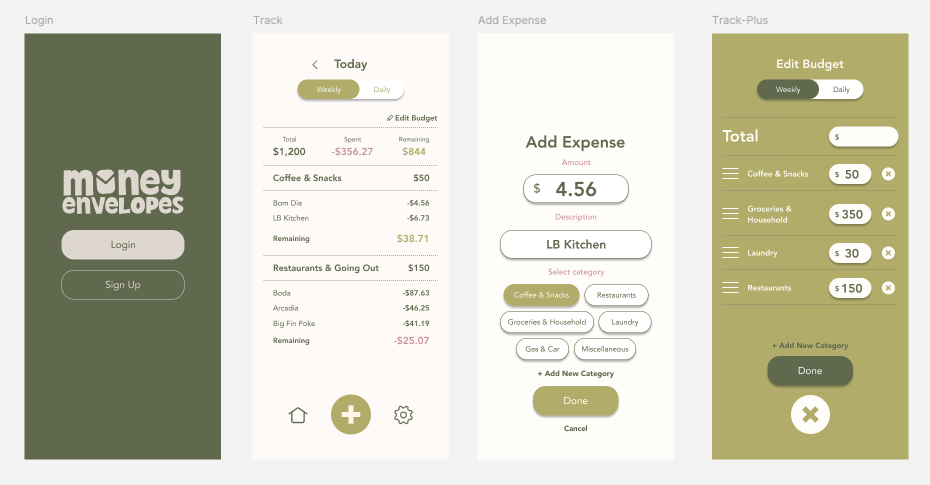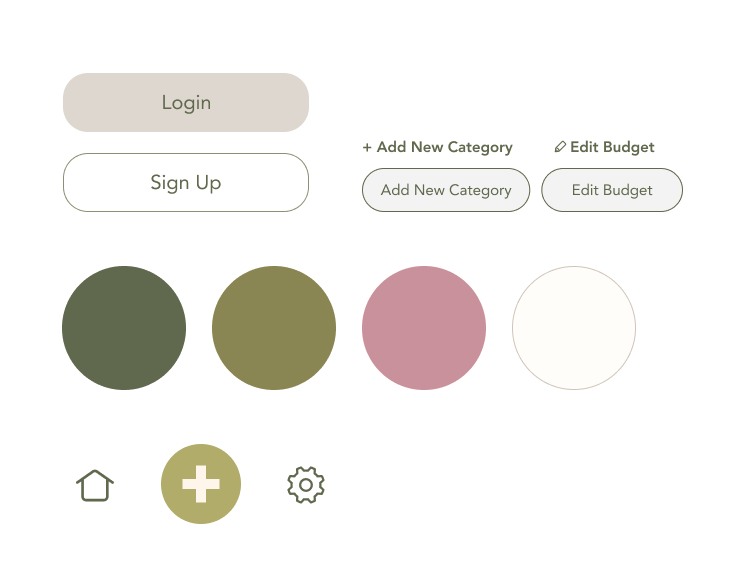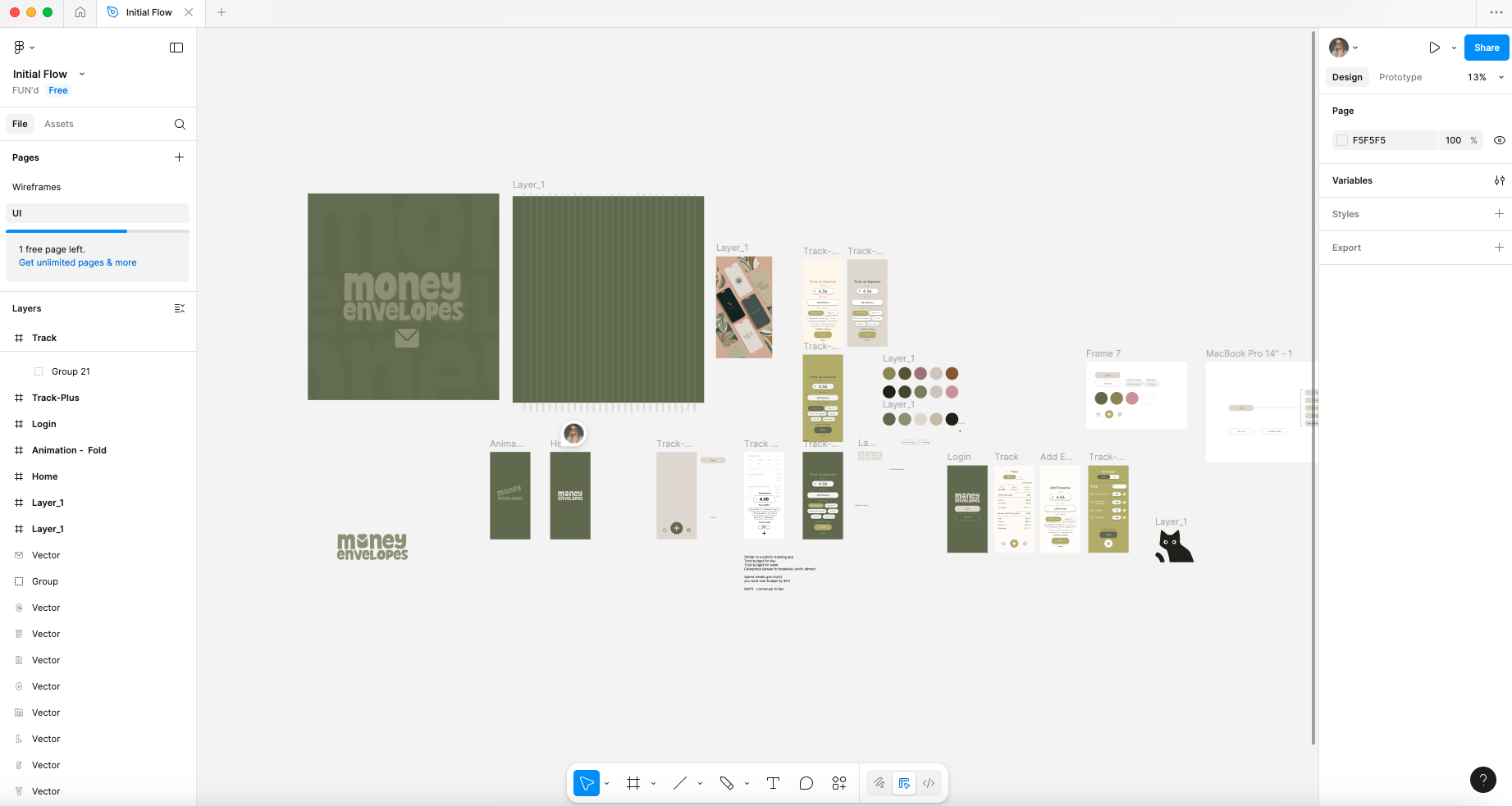Money Envelopes
A manual budgeting app inspired by calorie tracking
Overview
As a longtime user of behavior-change apps like MyFitnessPal, Noom, and Weight Watchers, I’ve always found their calorie/point tracking model incredibly intuitive — you have a daily or weekly limit, you log what you consume, and the app helps you stay accountable.
Money Envelopes brings this same visual and mental model to personal finance. It’s a manual-entry budgeting app that helps users track daily or weekly budgets across customizable categories — just like using real cash envelopes.
Designed for people who want more control and less chaos than automated apps like Mint, this tool is lightweight, intentional, and built with real spending behavior in mind.
The Problem
Most budgeting apps are either too complex or too automated to be useful.
Apps like Mint or RocketMoney often miscategorize expenses, overwhelm users with charts, and make it difficult to track one-time or irregular purchases. Over time, this leads to frustration, abandonment, and a loss of trust in the data.
Users who want more mindful, low-friction tracking are often left with spreadsheets — or nothing at all.
I wanted to create something simple. No syncing. No AI guessing games. Just you, your envelopes, and a clear view of how much you’ve spent — and what’s left.
Goals
Build a clear, easy-to-use UI inspired by fitness tracking tools
Enable users to manually log expenses by category
Support both daily and weekly budget views (like Weight Watchers' daily/weekly points)
Create a working prototype using basic front-end tools
Test with a small group of real users to validate assumptions and iterate
Users & Early Research
This idea came from personal pain points, but I didn’t want to build in a vacuum.
To validate the concept, I spoke with about 10 friends and peers in my coworking space — mostly people in their 20s and 30s who are freelancers, entrepreneurs, or early in their careers. I asked how they track their spending, if they use budgeting tools, and what their biggest frustrations were.
Key takeaways:
Many had tried Mint or similar apps but quit due to inaccurate categorization or information overload
Most liked the idea of a “manual” app if the entry process was fast and the UI felt lightweight
Several said they would use something like this if it felt simple enough — especially those already familiar with calorie-tracking apps
This early feedback gave me confidence to move into concepting and prototyping.
Design Process
I mapped out a very simple user flow where they can either log in or sign up/create a profile. Once they log in, they can:
Track an expense
Edit their categories
View daily/weekly budget
Change profile settings
View Weekly/Monthly Summary (this one will come up automatically at the end of the week/month)
From here, I created some basic wireframes, modeled on calorie trackers like MyFitnessPal and Weight Watchers and I liked the idea of a simple entry/categorization of the data entry from the bottom (similar to Pinterest’s share function within their app). I am still working on the summary screens!
Next, I started to flesh out a basic design system: color palette, type hierarchy, button/icon styles and shapes to use throughout the application.
From there, the real sketching/UI design began in Figma
Collaboration & Build
I’m working with a friend in computer science grad school to build the first version of the prototype. We’re using simple front-end technologies (React, Firebase, etc.) to keep things scrappy and testable.
What’s Next
We’re building the prototype now, with plans to test it with the same group of friends (and a few new testers!)
Based on user feedback, we’ll iterate on the flows and refine the design system
I’d love to eventually release this as a minimal product for budgeting nerds like me — but right now the goal is to learn, test, and see if this solves a real problem
Reflections
This project blends personal experience with product thinking. It’s an example of how I approach problems:
Start from lived experience
Validate quickly with peers
Prototype thoughtfully
Test before overbuilding
I believe some of the best products are born out of specific frustrations — and this one’s close to my heart.






